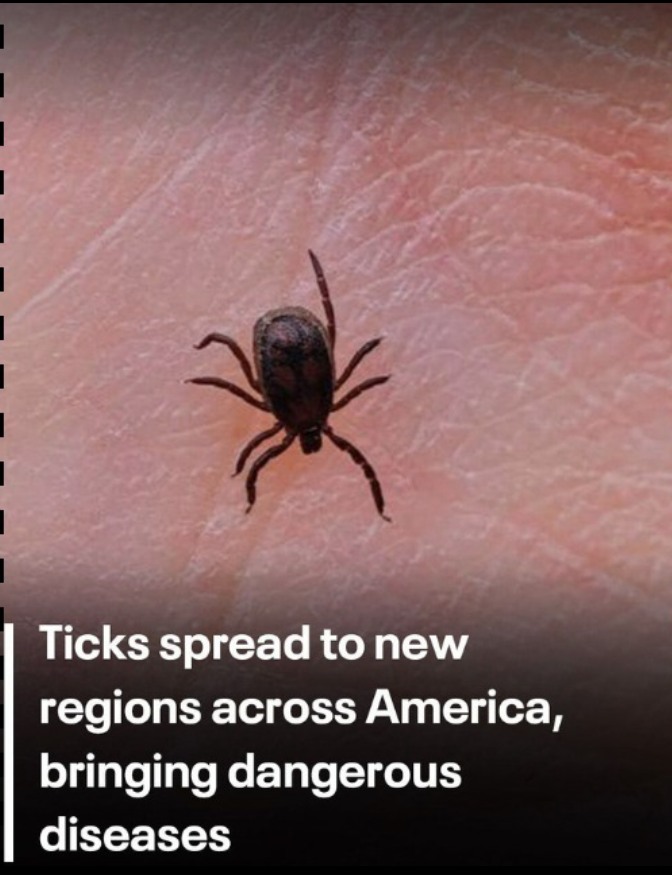-
Rocky Mountain wood ticks moving into higher elevations.
-
First reports of Lyme disease-carrying ticks in California.
4. Urban & Suburban Areas
-
Ticks are no longer just in forests—parks, backyards, and green spaces are now risk zones.
Diseases Carried by Ticks
| Disease | Primary Tick Carrier | Symptoms |
|---|---|---|
| Lyme disease | Blacklegged tick | Fever, fatigue, bullseye rash, joint pain |
| Anaplasmosis | Blacklegged tick | Flu-like symptoms, severe if untreated |
| Babesiosis | Blacklegged tick | Malaria-like illness (fever, chills, anemia) |
| Powassan virus | Blacklegged tick | Rare but severe (neurological damage, death in some cases) |
| Alpha-gal syndrome | Lone Star tick | Allergic reaction to red meat (delayed hives, anaphylaxis) |
| Rocky Mountain spotted fever | American dog tick | Rash, fever, organ failure if untreated |
How to Protect Yourself
✔️ Before Going Outdoors
-
Use EPA-approved repellents (DEET, picaridin, or permethrin-treated clothing).
-
Wear long sleeves, pants, and light-colored clothes (easier to spot ticks).
✔️ After Being Outside
-
Check your body (especially scalp, armpits, groin).
-
Shower within 2 hours to wash off unattached ticks.
-
Inspect pets—they can bring ticks inside.
✔️ In Your Yard
-
Keep grass short and remove leaf litter.
-
Use tick-control treatments if in a high-risk area.
✔️ If You Find a Tick
-
Remove it with tweezers (grasp near the head, pull straight out).
-
Save the tick (in a sealed bag) for testing if symptoms develop.
-
Monitor for symptoms (rash, fever, fatigue) and see a doctor if they appear.
Why Are Ticks Spreading?
-
Climate change → Warmer winters = longer tick seasons.
-
Wildlife movement → Deer, mice, and birds spread ticks to new areas.
-
Urban sprawl → More people living near tick habitats.
Final Thoughts
Ticks are no longer just a rural problem—they’re in backyards, parks, and new regions across the U.S. Awareness and prevention are key to avoiding serious illnesses.
